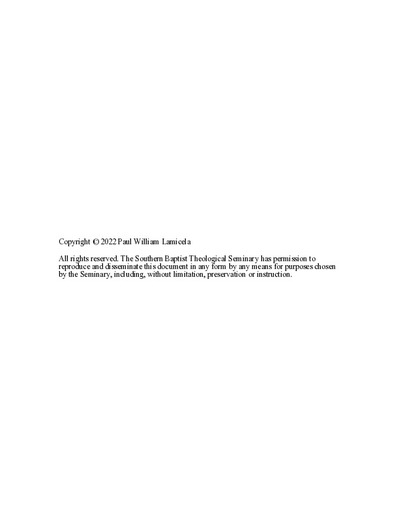"Remember the Predictions of the Holy Prophets": 2 Peter's Prophetic Use of the Old Testament
Abstract
This dissertation argues that the author of 2 Peter reads the OT as a prophetically forward-pointing narrative which colors the present time. It does so both by direct promise-fulfillment and by constituting the narrative world which contains Peter himself, his readers, and his opponents. This narrative script grounds 2 Peter’s ethical warnings and exhortations.
After addressing introductory matters in chapter 1, chapter 2 sketches a broad Petrine hermeneutic of the OT. Peter reads Scripture as prophetic, as emphasizes Messianic suffering and glory, and as a story to “step into.”
Chapter 3 studies the influence of Proverbs and the biblical “two ways” motif in 2 Peter. Peter eschatologizes wisdom: the way of life leads to new creation; the way of death leads to cosmic destruction. Chapter 4 focuses on 2 Peter’s material on true vs. false prophets and true vs. false prophecy. Peter and his fellow apostles follow the line of Israel’s true prophets, and the false teachers are likened to Israel’s false prophets and specifically Balaam.
Chapter 5 studies the use of three stories from Genesis in 2 Peter 2:4–10a: the “angels who sinned” (Gen 6:1–4), Noah’s flood, and the destruction of Sodom and Gomorrah. Peter structures this paragraph (2:4–10a) to develop a pattern from ancient biblical history proving that God can and will punish the ungodly and deliver the righteous (further developed in 2 Pet 3). He also employs these stories to characterize his own day.
Chapter 6 studies 2 Peter 3, the central concern of which is the certainty and efficacy of the word and promise of God. The flow of Scriptural imagery and argument in 2 Peter 3 is built around a succession of four events: creation, flood, fiery judgment (Sodom), and new creation. Peter also references Psalm 90:4, Habakkuk 2:3, and Isaiah 60:22 to guide his readers in thinking through the seeming delay of Jesus’ promised return. The chapter closes with Peter’s use of Isaiah’s new creation promise.
Chapter 7 synthesizes the study’s findings, draws conclusions, and discusses the significance of the study.

